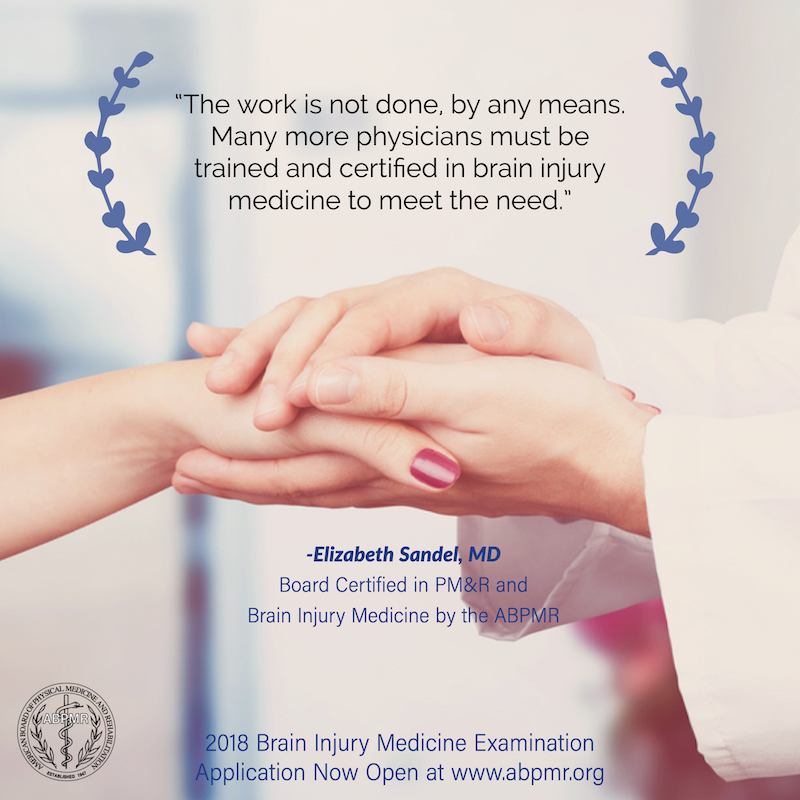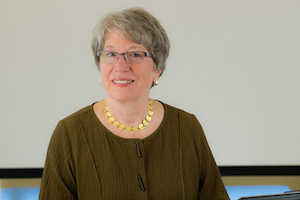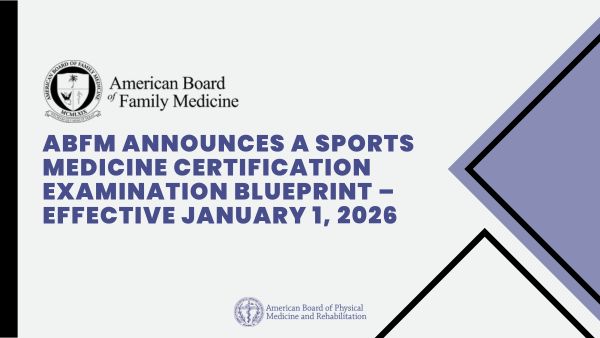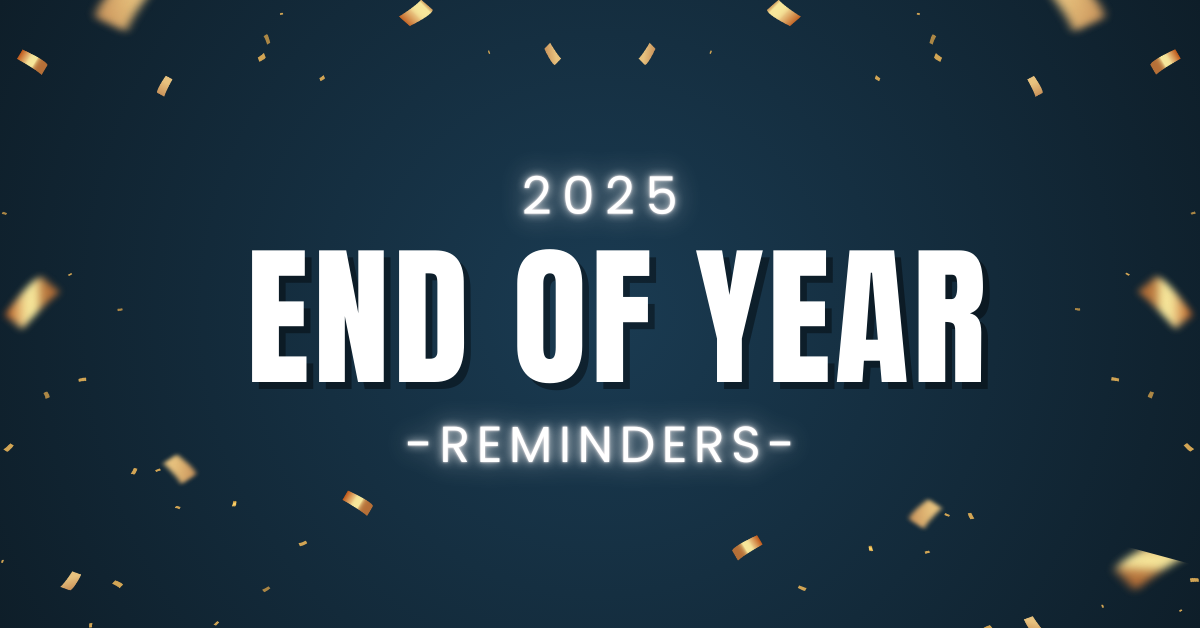Subspecialty Certification
From Practitioner to Subspecialist: My Journey in Brain Injury Medicine by Elizabeth Sandel, MD

Because I’ve practiced brain injury medicine from the beginning of my medical career in the 1980s, I have seen the need for the subspecialty to grow and change over the years. Now, physiatrists treating brain injuries are perfectly positioned to be leaders in this “new” field. Read on for my experience and perspective, and then consider applying for the Brain Injury Medicine Examination today.
PM&R and Brain Injury Rehabilitation: A Perfect Match
By my last year in medical school back in the 1980s, I had narrowed my choice of specialty to neurology or physical medicine and rehabilitation (PM&R or physiatry). PM&R had a team approach with many experts working together on behalf of the patient and family and a comprehensive approach to patient care, so that was my final choice.
After my PM&R residency in 1984 at Thomas Jefferson University, I chose to extend my training with physiatrist Lawrence Horn in a fellowship at Magee Rehabilitation Hospital. We called the specialty “brain injury rehabilitation” back then. That was a best decision, and then decades of hospital and clinic work combined with teaching and research at a variety of institutions was always intense, but it couldn’t have been more gratifying or fulfilling.
The Field of Brain Injury Medicine Takes Shape
In 1996, Dr. Horn and Dr. Nathan Zasler published the first textbook, Medical Rehabilitation of Traumatic Brain Injury. Eleven years later, Dr. Zasler, along with physiatrist Ross Zafonte and neurologist Douglas Katz, published Brain Injury Medicine, a 1275-page tome, now in its second edition. Holding that in my two hands in 2007 confirmed my belief that this was, in fact, a major medical specialty in need of more support from organized medicine.
Physicians from a variety of specialties have been shining a light on the unmet needs of people living with brain injuries for decades, including through specialty societies and patient advocacy groups. In 2011, their perseverance paid off when the American Board of Medical Specialties officially recognized brain injury medicine (BIM) as a distinct subspecialty, approving the application co-sponsored by the American Board of Physical Medicine and Rehabilitation (ABPMR) and the American Board of Psychiatry and Neurology (ABPN). What an honor and a privilege to be able to help create the first exam, and then to take the exam as one of the first candidates in 2014. It was the first big exam I’ve taken that I can truthfully say was fun!
More Brain Injury Medicine Subspecialists Needed
The work is not done, by any means. Many more physicians must be trained and certified in brain injury medicine to meet the need. Let’s just compare cancer (and oncology) statistics, keeping in mind that we would need a BIM workforce study to calculate more definitive numbers. The American Society of Clinical Oncologists (ASCO) reports the current number of oncologists in the US as 11,905 and the National Cancer Institute reports the 2014 cancer incidence at slightly under 1.7 million, considerably less than the 2.5 million the CDC reports for brain injuries (no doubt an underestimation since the milder brain injuries or concussions are not well-represented in the numbers). The number of brain injury medicine specialists that are or will be board certified over the next few years is not likely to reach even 10% (1,190) of the current number of oncologists. (And, by the way, the ASCO also predicts a shortage of oncologists by 2020 in their recent workforce study even though the cancer incidence is declining.)
With this unmet need of people with brain injuries and the fulfilling nature of a career in BIM in mind, my hope is that many more qualified physicians will make a best decision by becoming certified in BIM. You won’t regret it!
The 2018 Brain Injury Medicine Examination Application is now open through March 15 (regular application period), or through April 15 with a late fee. Now through the 2022 examination, candidates can apply via practice pathway.
The 2018 exam will be administered on Sept. 24, 2018 at Pearson Professional Centers nationwide. Find out more here, or log in to apply today!

Dr. Elizabeth Sandel, Photo by Susan Freundlich
Elizabeth Sandel, MD has been providing medical care to patients with brain injuries for more than 30 years. Specializing in brain injury medicine, she currently serves as Medical Director for Paradigm Management Services, an organization that provides medical case management throughout the U.S. to catastrophically injured workers, including those with concussions and other brain injuries, spinal cord injuries, and multiple trauma. She also serves as Clinical Professor in the Department of Physical Medicine and Rehabilitation at the University of California Davis School of Medicine.
Dr. Sandel is board certified in both Physical Medicine and Rehabilitation (PM&R) and Brain Injury Medicine (BIM). She is an active member of the American Academy of Physical Medicine and Rehabilitation (AAPM&R), the largest organization of physicians specializing in PM&R in the world. She served this organization on the Board of Governors for 8 years and as President from 2009–2010. She was a member of the Brain Injury Medicine Examination Committee of the American Board of PM&R from 2011 to 2015 and was one of the first 321 physicians certified in this new medical subspecialty in November 2014.
You can find Dr. Sandel on her website, Twitter, and LinkedIn.



